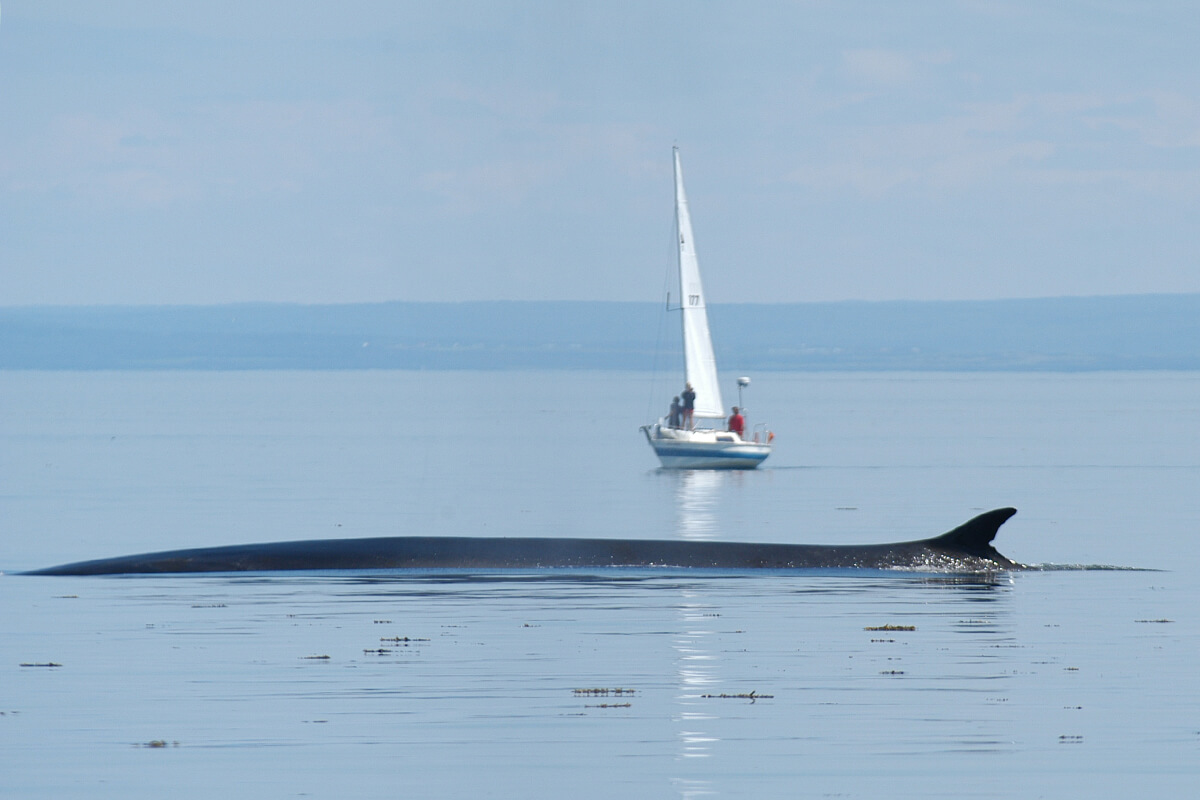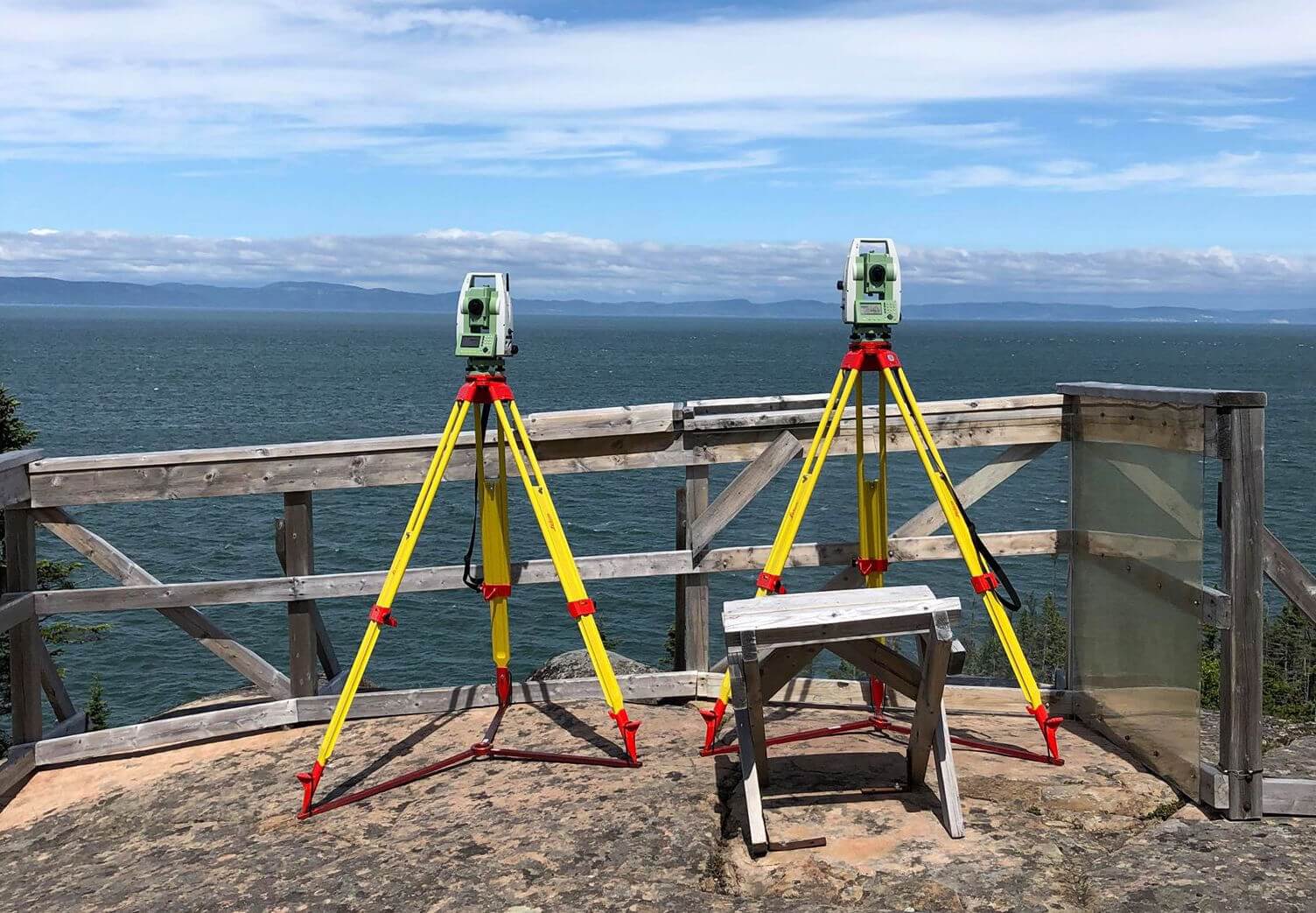Like thousands of other pleasure boaters, do you enjoy taking advantage of warm summer days to operate your craft in the Saguenay-St. Lawrence Marine Park? In just a few clicks, you could make a significant contribution to navigation research by participating in the research project of Camille Kowalski, PhD candidate at the Université du Québec en Outaouais (UQO).
A poorly documented segment
“All industry players agree that recreational boating is the most poorly documented segment of navigation in the St. Lawrence Estuary and the Saguenay,” affirms Ms. Kowalski. Unlike other types of watercraft – merchant ships, ferries, cruise ships – recreational boaters are not required to be equipped with a device that transmits their position in real time (AIS transponder). This makes it difficult to estimate their contribution to underwater navigation-related noise in the St. Lawrence Estuary and the Saguenay Fjord. This sector represents the summer range of the St. Lawrence beluga.
In light of this observation, Camille Kowalski is reaching out to boaters and encouraging them to share their GPS trajectories. By pairing these data with visual and acoustic surveys, she will obtain a general overview of recreational boating in the St. Lawrence Estuary and the Saguenay, a first step toward a better understanding of how these waters are used.
Hot can I participate?
All you have to do is use your usual navigation system (e.g. Navionics) or download one of the mobile applications presented by the researcher, activate it as you are about to set sail, email it to [email protected] when you dock again, and, lastly, answer a brief questionnaire (in French) concerning your practices and the type of boat you operate. No expensive equipment necessary… just your phone!
These preliminary data will help shed light on a number of hitherto unanswered questions. What types of boaters frequent which sectors? How often do they navigate the St. Lawrence? Of the more popular sectors, which ones are also frequented by belugas? “It’s not a question of controlling boater behaviour in particular, but rather of having a sample that will allow us to draw an overall portrait of pleasure boating in order to guide our research,” points out project co-director, researcher and UQO professor Clément Chion.
A clearer picture
In addition to soliciting boater participation through her website, her Facebook page and the posters that she has posted in marinas, the young researcher is also present in the field. For several months, she has been scanning the horizon from
Rivière-du-Loup, where she has been measuring the positions of boaters as well as those of belugas, “in order to document any interactions between the two,” she clarifies. Acoustic data are also collected in this area using a hydrophone. The researcher will thus be able to match the “acoustic signatures” of boats and belugas with her observations. These additional parameters will allow her to fine-tune the portrait produced using GPS trajectories.
In the off-season
Even after pleasure boaters have left the waters of the St. Lawrence for the winter, the research work will continue. For the remainder of her project, Camille Kowalski will integrate her data into a simulation platform that will represent the movements of marine mammals and ships. Up until now, only the commercial shipping aspect had been represented. With Kowalski’s project, virtual boaters will be able to “navigate” through the simulation and make decisions similar to those real boaters would be faced with on the water in the summer.
Mr. Chion believes that the voluntary participation of boaters will reinforce marine mammal conservation and that the sharing of their trajectories is a concrete gesture toward this effort. His student agrees, and points out that the aim of the research is absolutely not “to judge an individual’s behaviour: the data we collect are used strictly for research and never without the boaters’ authorization.”
For boaters, this is therefore a unique opportunity to contribute to scientific research and to help make the St. Lawrence Estuary an example of a harmonious coexistence between navigation and marine ecosystems.






